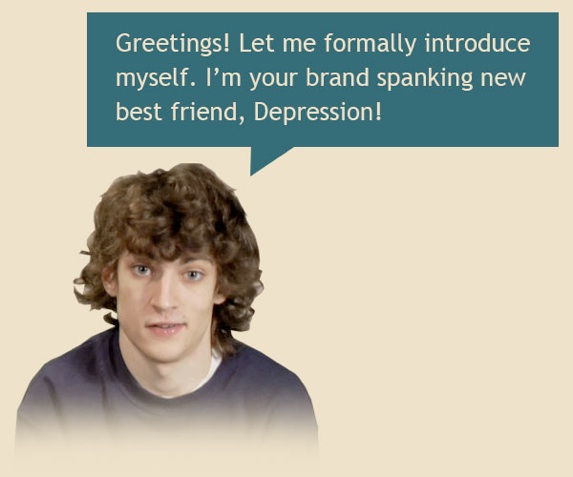Latest Public Service Radio Minute
Loss of EmploymentLoss of Employment, MP3, 1.3MB
Listen to or download all our PSAsSupport Our Work
Please donate so we can continue our work to reduce the stigma of psychiatric illness, encourage research, and support educational activities for behavioral health professionals and the public. Ways you can donate and help are on our Support and Donations page. Thank you!
More InfoLatest News Around the Web
Mental Illness Often Overlooked In Sports.
The New York Times (10/30, B8, Rhoden, Subscription Publication) reports, “For all of the current focus on traumatic brain injury as a result of concussions, mental illness, often overlooked, exists at every level of sports.” In fact, “sports too often is a masking agent that hides deeply rooted mental health issues. The better the athlete, the more desperate to reach the next level, the less likely he or she will reach out for help. The gladiator mentality remains a primary barrier.” Many athletes pride themselves on being mentally tough, making it very difficult for them to admit they need help.
Related Links:
— “With No One Looking, a Hurt Stays Hidden, “William C. Rhoden , The New York Times, October 29, 2012.
Study Pinpoints Optimal Amount Of Exercise For Mental Health.
Medscape (10/26, Boughton) reports, “One of the largest studies to date on exercise and psychological distress shows that the optimal amount of physical activity for improved mental health may be from 2.5 to 7.5 hours of activity per week.” But, “the cross-sectional observational study also showed that individuals who exercised more than 7.5 hours per week had diminished mental health.” The study, which was based on data on some 7,674 adults, was published online Sept. 7 in the journal Preventive Medicine.
Healthy Lifestyle Habits In Midlife May Lead To Successful Aging. HealthDay (10/26, Preidt) reports, “Healthy lifestyle habits in midlife improve the chances that you’ll remain healthy as you get older,” according to a study published Oct. 22 in the Canadian Medical Association Journal. After following “5,100 healthy British men and women, aged 42 to 63, for 16 years,” researchers found that people in the successful aging group were those who maintained “good mobility, lung function, mental health, and thinking and memory skills, and [had] no chronic diseases such as diabetes, cancer, heart disease, stroke or disability at age 60 or older.”
Related Links:
— “Study IDs 4 Key Habits of Successful Aging,”Robert Preidt, HealthDay, October 25, 2012.
Physician Highlights Weaknesses In Children’s Preventive Mental Healthcare.
In a post appearing in the Boston Globe (10/26) “Child in Mind” blog, Claudia M. Gold, MD, refers to an article that appears in the current issue of the Journal of the American Academy of Child and Adolescent Psychiatry, “Integrating Mental Health Care Into Pediatric Primary Care Settings.” She quotes the article, which states that “pediatric training provides limited experience in screening or intervening for mental disorders,” while “child psychiatry training emphasizes the treatment of children with established psychiatric diagnoses and typically offers limited experience with children at risk for mental disorders or children whose symptoms do not reach the threshold for diagnosis.” Gold says the article suggests that “the current structure of the health care system does not have room for prevention.”
Related Links:
— “Preventive mental health care for children falls through the cracks, “Claudia M Gold, Boston.com, October 25, 2012.
Review: Behavioral Counseling May Help Reduce Heavy Drinking.
Medwire (10/25) reports, “Counseling about alcohol misuse can reduce the number of drinks consumed weekly among adults with risky drinking habits,” according to a reviewpublished online Sept. 25 in the Annals of Internal Medicine. The review of 23 trials lasting at least six months also found that “behavioral counseling can reduce the number of adults who engage in heavy drinking episodes, as well as reduce the amount of drinking above the currently recommended quantities.”
Very Positive Initial Findings May Not Hold Up After More Studies.
The Los Angeles Times (10/24, Brown) reports, “In a statistical analysis of nearly 230,000 trials compiled from a variety of disciplines, study results that claimed a ‘very large effect’ rarely held up when other research teams tried to replicate them,” according to research published in the Journal of the American Medical Association.
HealthDay (10/24, Gordon) reports, “When initial findings about an experimental drug or treatment sound too good to be true, they probably are, according to a new study” published in the Journal of the American Medical Association. Investigators “found that after a single study reports large benefits for a new medical intervention, additional studies almost always find a smaller treatment effect.” The researchers “suspect that a small study size contributes to the initially inflated benefits.”
Related Links:
— “Medical studies with striking results often prove false, “Eryn Brown, Los Angeles Times, October 24, 2012.
Foundation News
Nothing Found
It seems we can’t find what you’re looking for. Perhaps searching can help.

